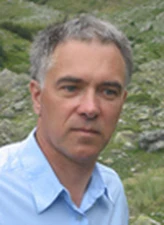Jean Pierre Valet

The 2010 Petrus Peregrinus Medal is awarded to Jean Pierre Valet for his outstanding contribution to palaeomagnetic data acquisition from sediments and lavas – essential for interpretation of palaeosecular, excursional and transitional regimes of the Earth’s magnetic field over the last millions of years.
Since the early eighties, the contributions of Jean-Pierre Valet to paleomagnetism through palaeomagnetic and rock magnetic studies of sediments and extrusive rocks have flourished. These contributions have significantly and continuously aided in improving our understanding of the geomagnetic field and the underlying behaviour of the geodynamo.
Jean-Pierre Valet started his research career as a Ph.D. student at the Centre National de la Recherche Scientifique in the palaeomagnetic laboratory of the Centre des Faibles Radioactivités under the supervision of Carlo Laj. Here, he worked on palaeomagnetic records of polarity reversals from Miocene and Pliocene marine sediment of Crete. This research led to his first Nature papers, but more were to follow.
In the early nineties, after returning from a stay at the Scripps Institution of Oceanography, where he worked with Lisa Tauxe, he joined the Laboratory of Geomagnetism and Paleomagnetism of the Institut de Physique du Globe de Paris, continuing his research on sedimentary magnetism and its application for studing polarity reversals. He also contributed to improvements of natural remanent magnetization intensity methods, and he initiated – with Yohan Guyodo and Laure Meynadier – the construction of global relative paleointensity stacks (the SINT stacks) for the last 200 kyr, 800 kyr and the last 2 Myr. He has proposed the hypothesis that the geodynamo works under a saw-tooth pattern mode, suggesting that the geomagnetic field abruptly recovers to a high intensity after a polarity reversal, followed by a slow progressive decrease of the geomagnetic moment until the next reversal. This hypothesis has stimulated a long-term discussion and debate in the geomagnetic and palaeomagnetic community.
In the last 15 years, Jean-Pierre Valet has also significantly contributed, particularly with Emilio Herrero-Bervera, to establishing absolute paleointensity records and records of palaeosecular variation, especially from lava flow sequences from Cameroon, the Canary Islands and Hawaii. He was successfully involved in analyses and (re-)interpretation of the palaeosecular variation of the last millennia.
In summary, for his many contributions to geomagnetism and paleomagnetism, including service to the scientific community at large, Jean-Pierre Valet richly deserves the recognition of the Petrus Peregrinus Medal.
